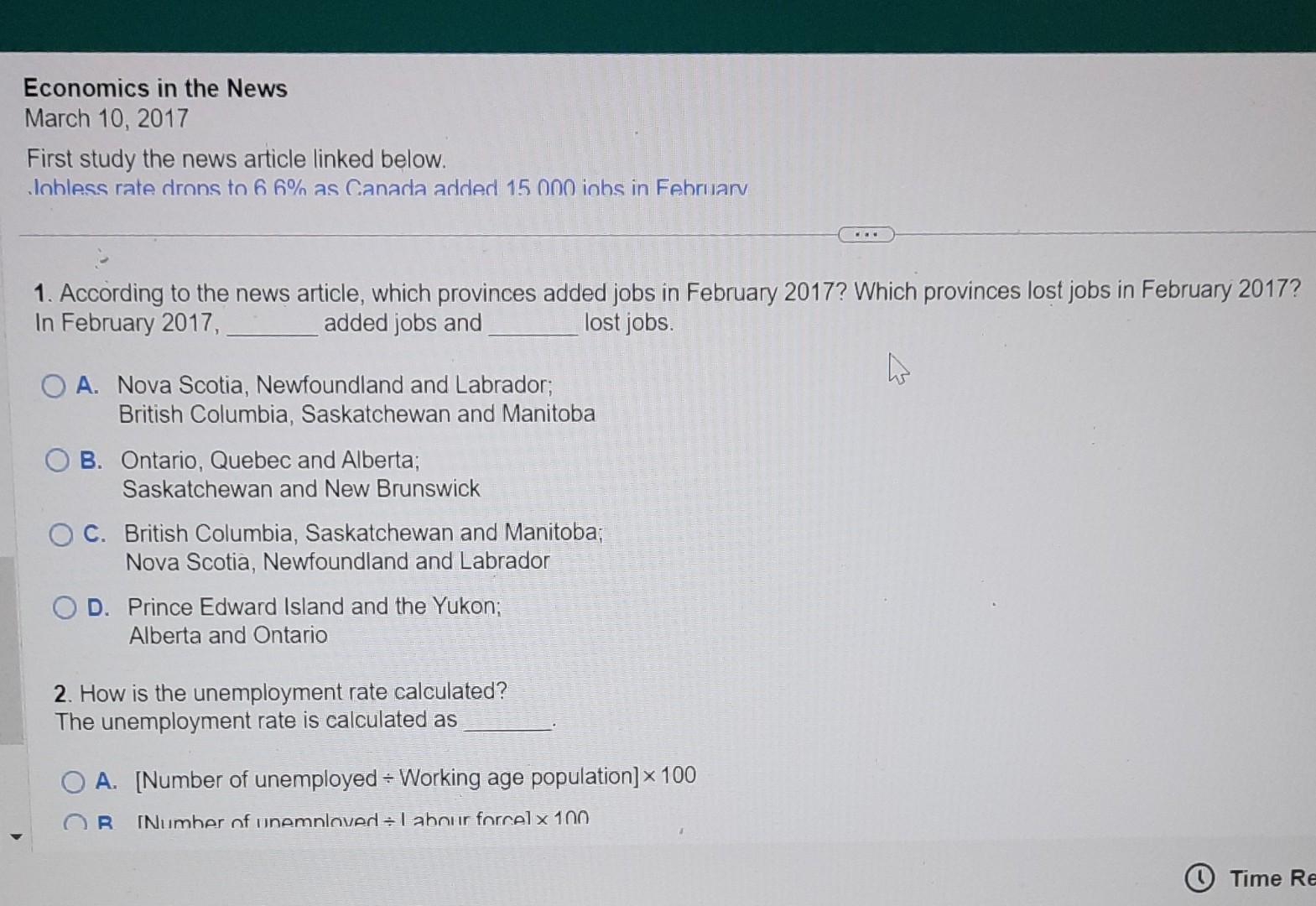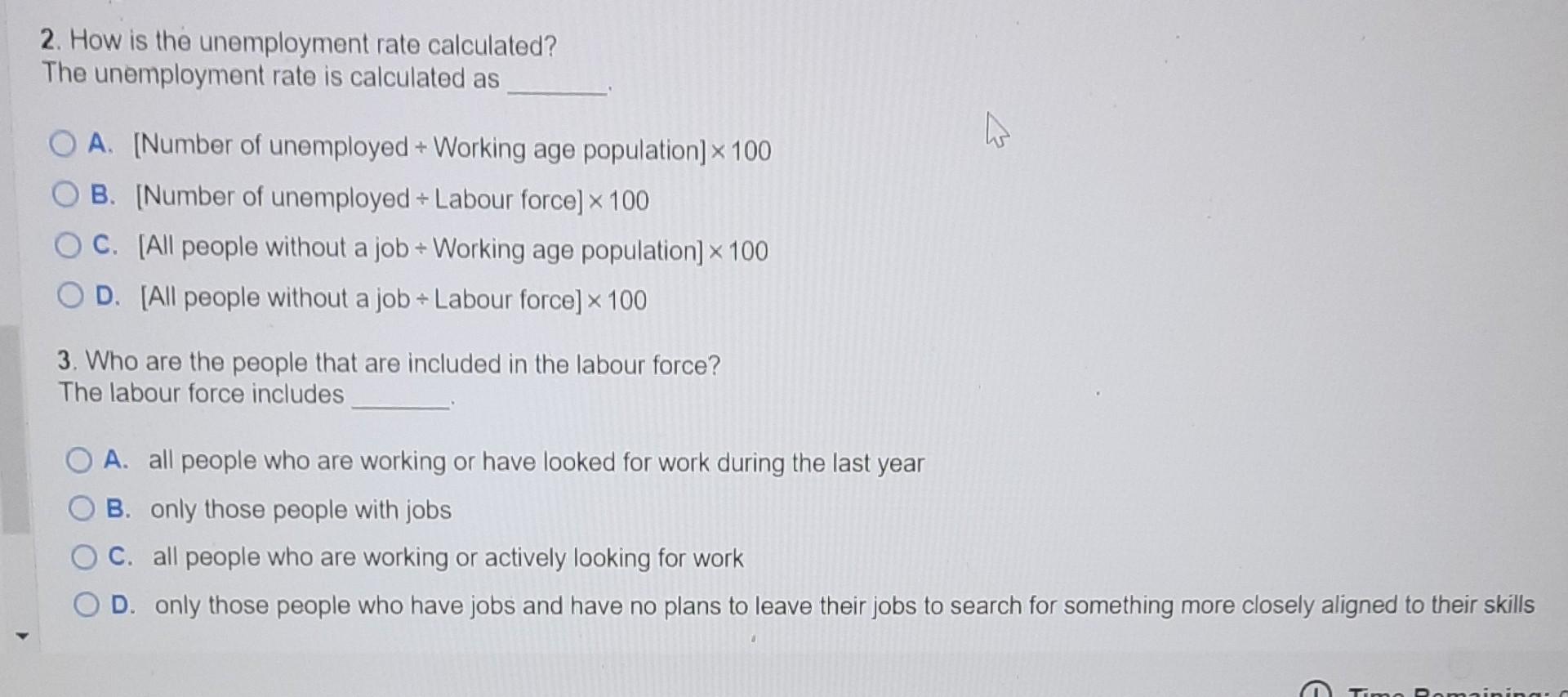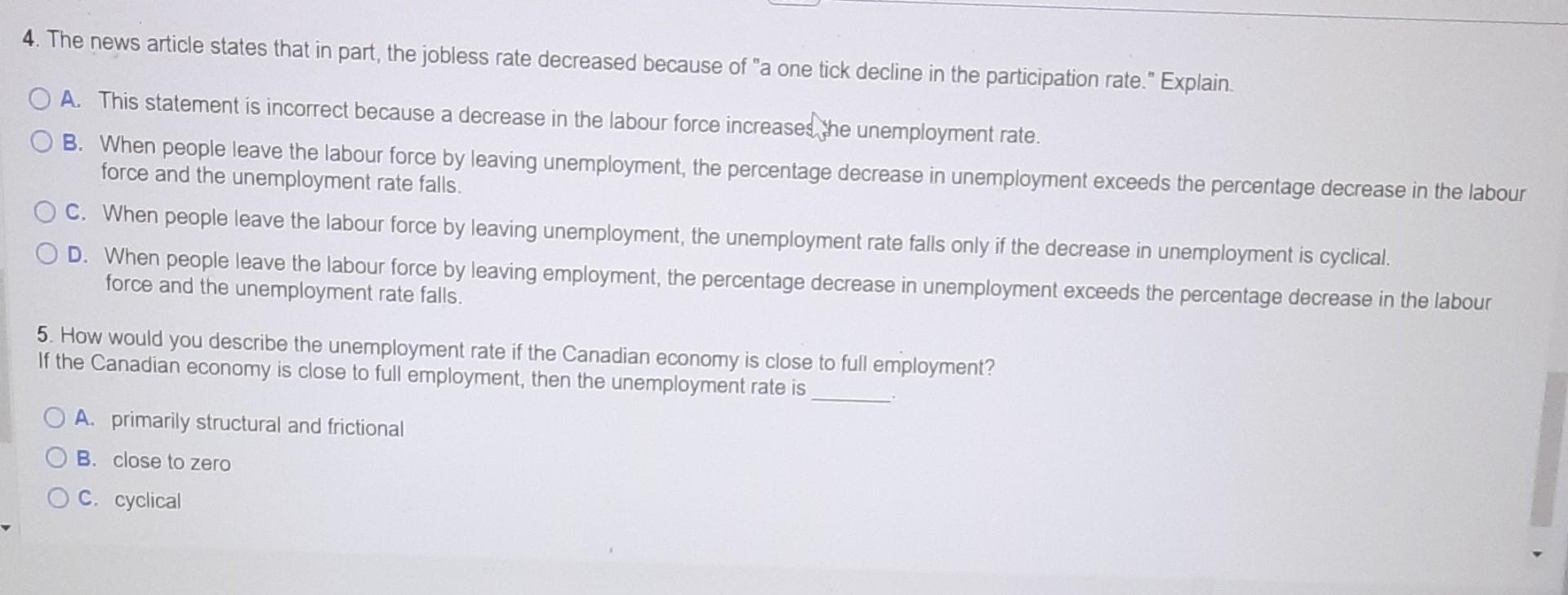Answered step by step
Verified Expert Solution
Question
1 Approved Answer
Economics in the News March 10, 2017 First study the news article linked below. .Inhless rate drnns to 6 f% as C.anada added 15000 inhs




Economics in the News March 10, 2017 First study the news article linked below. .Inhless rate drnns to 6 f\% as C.anada added 15000 inhs in Fehruarv 1. According to the news article, which provinces added jobs in February 2017? Which provinces lost jobs in February 2017? In February 2017, added jobs and lost jobs. A. Nova Scotia, Newfoundland and Labrador; British Columbia, Saskatchewan and Manitoba B. Ontario, Quebec and Alberta; Saskatchewan and New Brunswick C. British Columbia, Saskatchewan and Manitoba; Nova Scotia, Newfoundland and Labrador D. Prince Edward Island and the Yukon; Alberta and Ontario 2. How is the unemployment rate calculated? The unemployment rate is calculated as A. [Number of unemployed Working age population 100 R INmhar nf nemnlnved I ahn ir fnrral 1 2. How is the unemployment rate calculated? The unemployment rate is calculated as A. [Number of unemployed + Working age population] 100 B. [Number of unemployed + Labour force] 100 C. [All people without a job Working age population ]100 D. [All people without a job Labour force ]100 3. Who are the people that are included in the labour force? The labour force includes A. all people who are working or have looked for work during the last year B. only those people with jobs C. all people who are working or actively looking for work D. only those people who have jobs and have no plans to leave their jobs to search for something more closely aligned to their skills 4. The news article states that in part, the jobless rate decreased because of "a one tick decline in the participation rate." Explain. A. This statement is incorrect because a decrease in the labour force increasesthe unemployment rate. B. When people leave the labour force by leaving unemployment, the percentage decrease in unemployment exceeds the percentage decrease in the labour force and the unemployment rate falls. C. When people leave the labour force by leaving unemployment, the unemployment rate falls only if the decrease in unemployment is cyclical. D. When people leave the labour force by leaving employment, the percentage decrease in unemployment exceeds the percentage decrease in the labour force and the unemployment rate falls. 5. How would you describe the unemployment rate if the Canadian economy is close to full employment? If the Canadian economy is close to full employment, then the unemployment rate is A. primarily structural and frictional B. close to zero C. cyclical 5. How would you describe the unemployment rate if the Canadian economy is close to full employment? If the Canadian economy is close to full employment, then the unemployment rate is A. primarily structural and frictional B. close to zero C. cyclical D. significantly larger than the natural unemployment rate
Step by Step Solution
There are 3 Steps involved in it
Step: 1

Get Instant Access to Expert-Tailored Solutions
See step-by-step solutions with expert insights and AI powered tools for academic success
Step: 2

Step: 3

Ace Your Homework with AI
Get the answers you need in no time with our AI-driven, step-by-step assistance
Get Started


